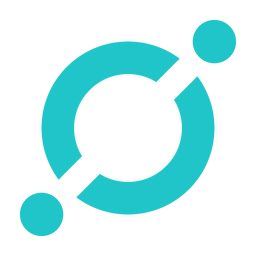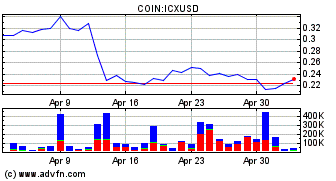
Aggregator Network
With Interoperability.
ICON is a blockchain technology and network framework designed to allow independent blockchains to interact with each other. Communities are connected to the ICON Network through a decentralized exchange.
ICON is a blockchain protocol for decentralized applications. As an aggregator chain, it achieves interoperability—a web of interconnected networks aggregating all blockchain data into one layer.
Join the ICON network that includes the Seoul Government, Samsung, LINE and the world’s largest corporations.
What Is ICON (ICX)?
ICON is a platform that is intended to facilitate the interactions of independent blockchains, also referred to as communities. Within the ICON platform, a community is defined as a network of nodes that follow a single governance system. (A node is a computer that connects to a cryptocurrency network.)
Cryptocurrency networks (such as Bitcoin and Ethereum) are considered communities, but banks, businesses, hospitals, schools, and governments could also participate as communities within this ecosystem. ICON is supported through a cryptocurrency token, ICX. The ICON Project was founded in 2017 by the Icon Foundation, an organization based in South Korea.
The goal of the ICON project is to facilitate a platform where entities from a diverse range of industries—financial, security, insurance, healthcare, educational, and commerce—can interact and transact on a single network.
KEY TAKEAWAYS
ICON is a blockchain technology and network framework designed to allow independent blockchains to interact with each other.
Communities are connected to the ICON Network through a decentralized exchange.
Potential opposition from traditional centralized cryptocurrency exchanges is a major challenge facing ICON.
Understanding ICON (ICX)
An initial coin offering (ICO) in September 2017 for Icon’s cryptocurrency, ICX, raised roughly $43 million. This sale included 50% of ICON’s token supply. The project officially launched its blockchain in January 2018 and participants in the ICO received their ICX cryptocurrency in June 2018.
In 2019, ICON released its own token standard, IRC16, which allows users to use the ICON software as infrastructure to create their own tokenized assets and securities.2? These tokenized assets and securities are digital tokens (or "coins") that represent equity ownership units. With tokenized equity, a business can raise capital by issuing its shares in the form of digital assets.
This is how ICON describes its goal: to establish a “digital nation,” wherein different economic actors can issue and control their own forms of value, under rule systems they select. According to its website, the aim of Project ICON is to "hyperconnect the world" by "building one of the largest decentralized networks in the world."
?
The ICON project took inspiration for their project from the way that real-world economies are structured; businesses, nonprofit organizations, and government institutions all leverage a common medium of exchange—a national currency—while still remaining distinct but interoperable economic actors.2? The blockchain technology and accompanying cryptocurrency token, called ICX, allow participants in a decentralized system to converge at a central point, creating an interconnected blockchain network.
A blockchain is a type of database. It differs from a typical database in the way that it stores data. Data is stored in blocks in chronological order: As new data comes in, it is entered into a new block. Once the block is filled with data, that block is chained onto the previous block.
While blockchains are most commonly associated with cryptocurrencies, there are additional areas where this technology can be applied because different types of information can be stored on a blockchain. While the most common use so far has been as a ledger for transactions, any exchange of information can be added to a blockchain. Transactions involving securities, currencies, business contracts, deeds, loans, intellectual property, and personal identification could be tokenized.
Every blockchain is managed by a specific network. For this reason, in the past, connecting different blockchains was not considered a possibility. The ICON project is an attempt at such a connection. Unlike other centralized payment systems, which require businesses to adhere to their own policies and guidelines, ICON allows individual communities to retain control of their own policies. In this way, ICON seeks to reduce potential barriers to adoption.
Goals of ICON
ICON aims to create a greater network—composed of individuals networks—that is powered by cryptocurrencies. Blockchains that participate in the ICON project can exchange currencies using the platform’s decentralized exchange (DEX).
The DEX sets currency reserves for each blockchain community so that the communities can exchange value in real-time. Exchange rates are set for these transactions using an A.I. analysis model and the native ICX coin is used as an intermediary currency for the exchange.
The ICON project consists of five major components: the ICON Republic, ICON communities, community representatives (C-Rep), community nodes (C-Nodes), and citizen nodes. ICON communities are a network of nodes within a single governance system; they can operate with their own governance structures, numbers of nodes, and characteristics. Communities can also vary in their approaches to decision-making. For example, while bitcoin takes a consensus-driven approach, other communities—such as financial institutions—may follow a hierarchical approach.
Community nodes are the infrastructure for each community; they maintain a community’s blockchain. Community representatives are nodes that are elected from within each community and are trusted to interact with the ICON Republic. Through the community representative, each community's blockchain is linked to the ICON Republic. Community representatives receive ICX for their work.
The ICON Republic is the governing structure of the network. It is also the decision committee for the blockchain’s operations. ICON Republic governance is determined by the votes of community representatives. A helpful analogy is to imagine the ICON Republic as the United States and to imagine each ICON community as a separate state.
The actions of the ICON Republic do not determine the governance of the separate communities themselves. However, the ICON Republic does govern the process by which new ICX cryptocurrency is minted.
Citizen nodes are participants in the blockchain that do not have voting rights but can make transactions within a community, with other communities, and with the Icon Republic.
The ICON Republic's blockchain is referred to as the "nexus." The technology that powers the nexus is an algorithm called a loopchain. The loopchain connects communities that are part of the ICON Republic. These communities—when grouped together they are referred to as a consortium—determine a common set of rules that allow the different blockchains to effectively work together.
The set of rules governing how the independent blockchains interact with the ICON Republic's blockchain—the nexus—is called the Blockchain Transmission Protocol (BTP).
Finally, as with Ethereum, anyone can use ICON to build decentralized applications, called DAPPs, through the blockchain's public channel. Additionally, after these applications are listed on ICON’s DAPP store, anyone with a citizen node can download and use them.
Criticisms of ICON
While ICON has ambitious plans for connecting different communities, it faces many challenges in accomplishing this goal. First, many investors are used to traditional centralized cryptocurrency exchanges. While it is true that these traditional, centralized exchanges do not fit with the decentralized ideology of cryptocurrencies, in 2021, these exchanges are still an integral part of the cryptocurrency market. Many investors only purchase cryptocurrencies that they can buy through their favorite exchanges. This could create problems for ICX. Given the goals of ICON, many exchanges might not want to offer ICX to their customers.
High levels of competition increase the risk that a particular cryptocurrency will fail to catch on. Like other cryptocurrencies, ICON faces stiff competition from other cryptocurrencies.


